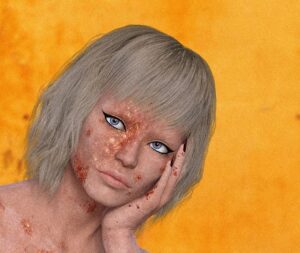Guarding Against the Spread of Monkeypox
Several active cases of monkeypox have been found in Texas recently. The Texas Department of Licensing and Regulation (TDLR) and the Texas Department of State Health Services remind all massage therapists, barbers and cosmetologists to continue practicing required sanitation, hygiene and safety standards.
Monkeypox is a virus that can cause a rash that may look like pimples or blisters. Symptoms usually start within three weeks of exposure to the virus, and include a rash, and sometimes flu-like symptoms before the rash appears. Most people develop a rash. Some people have developed a rash before the flu-like symptoms or did not develop the flu-like symptoms.
- The flu-like symptoms include fever, headache, muscle aches and backache, sore throat, cough, swollen lymph nodes, chills, or exhaustion.
- A rash may look like pimples or blisters, located on the hands, feet, face, chest, on or near the genitals or anus, or inside the mouth.
- The rash will go through different stages, including scabs, before healing which can take several weeks.

Anyone who exhibits monkeypox symptoms should contact their healthcare provider, even if they don’t think they’ve had contact with someone who has monkeypox.
The monkeypox virus can spread from person to person through close, personal contact (including skin to skin) with an infectious rash, scabs or bodily fluids from someone infected with monkeypox. The virus also can spread by touching items such as clothing, towels or linens, or surfaces that were used by someone who is infected with monkeypox.
TDLR and the Texas Department of State Health Services provide the following guidance for massage therapists, barbers and cosmetologists to help stop the spread of monkeypox here in Texas:
General Guidance for TDLR Massage, Barbering and Cosmetology Licensees:
- Avoid close, skin-to-skin contact or prolonged face-to-face contact with people who have a rash that looks like monkeypox.
- Wear personal protective equipment (PPE), including at minimum, gloves and a N-95 respirator (or a well-fitting medical mask, if N95 respirator if not available) if skin and face-to-face contact cannot be avoided. Gown and eye protection are also recommended, if available.
- Anyone who touches skin lesions or clothing, linens or surfaces that may have had contact with lesions should wash their hands immediately with an alcohol-based hand sanitizer (ABHS), or soap and water if ABHS is not available.
- Clean surfaces that were in direct contact with skin lesions using an EPA-registered disinfectant with an emerging viral pathogen claim in accordance with the manufacturer’s instructions
- Discard waste and disposable items that have been in direct contact with skin in a sealed plastic bag, then throw away in trash can.

Specific Guidance for Barbering and Cosmetology Establishments
- Licensees cannot provide services to a client if the barber or cosmetologist has reason to believe the client has inflamed, infected or broken skin or an open wound or sore in the area to be serviced.
- Multi-use equipment and implements must be cleaned and disinfected between use on each client. Single-use equipment must be discarded after use on one client. Shampoo bowls and manicure tables must be disinfected between clients. Licensees must use clean towels on each client, and towels must be washed in hot water and chlorine bleach. Haircutting capes must be kept clean. If one-use capes are not used, licensees must use a sanitary neck strip or clean towel to keep capes from coming into contact with the client’s neck.
- Avoid shaking linens, dry dusting, sweeping or using fans as this may spread the infectious particles
- Place linens and towels in an impermeable container or bag that can be disinfected afterwards. Wash linens in a standard washing machine with detergent, following label instructions.
- Discard waste and disposable items that have been in direct contact with skin in a sealed plastic bag, then throw away in trash can.
